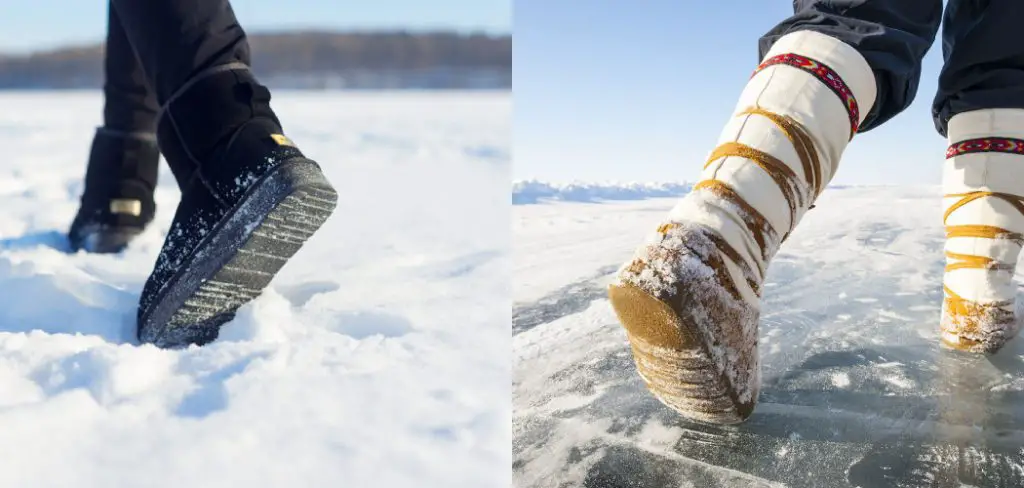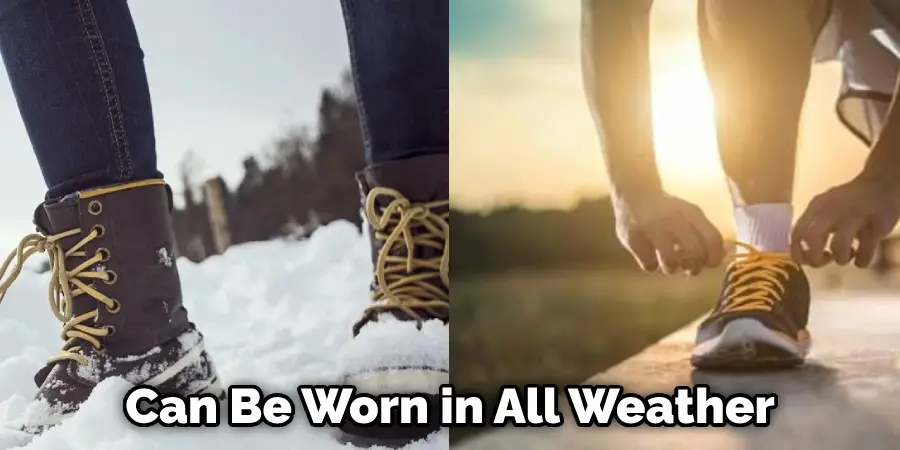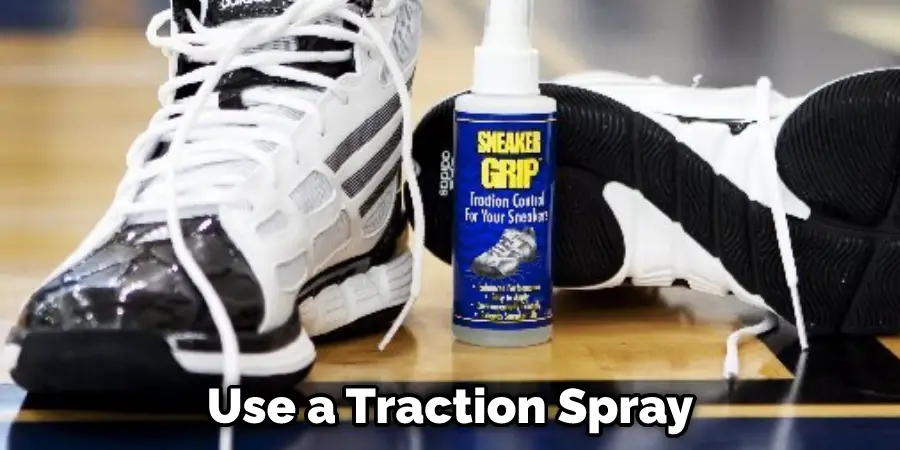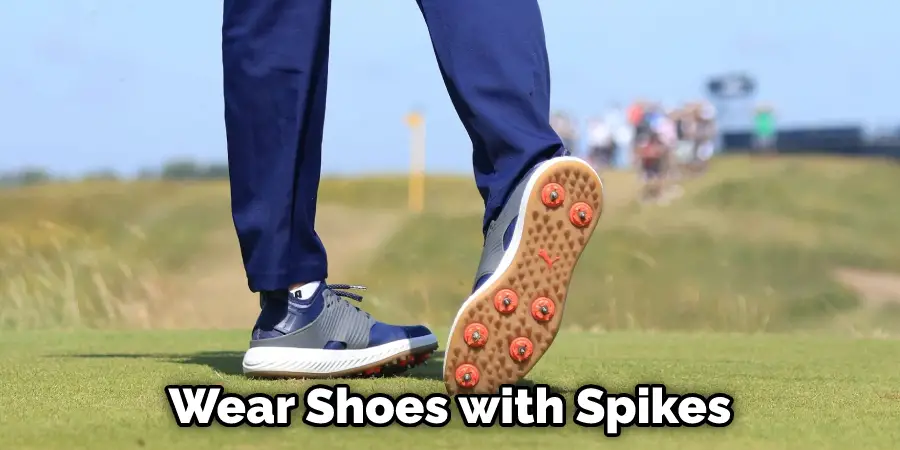Are you looking for a way to make your shoes less slippery? If so, you’re in luck! In this post, we will teach you how to make slip resistant shoes. This is a great way to prevent accidents and stay safe while walking on slick surfaces. Keep reading for instructions on how to get started.

Summary: If you want to make slip-resistant shoes, you’ll need a few materials, such as sandpaper, a spray bottle, and slip-resistant spray. First, sand the soles of the shoes to create a rough surface. Next, spray the slip-resistant spray onto the soles in a well-ventilated area. Once the shoes are completely dry, test them on a slippery surface to ensure they provide adequate traction.
What Are Slip Resistant Shoes?
If you’ve ever worked in a restaurant or other job where you’re on your feet all day, you know how important it is to have comfortable, slip-resistant shoes. Slip-resistant shoes are designed to provide traction on slippery surfaces, preventing slips and falls. They can be made from various materials, including rubber, leather, and synthetic fabrics.
Many slip-resistant shoes also have special features like padded insoles and reinforced toe caps to protect your feet further. So whether you’re working in a kitchen or simply want to be safer on icy sidewalks, slip-resistant shoes can give you the peace of mind and comfort you need.
Why Should You Make Slip Resistant Shoes?
Number one on the list of slip resistant shoes should be something that can be worn in all types of weather and still perform well. A versatile boot or shoe has a good tread pattern that can grip in wet and dry conditions.
They also shouldn’t be too bulky so that they can be worn comfortably in various settings, including work and recreation. And finally, they should be affordable since no one wants to spend a lot of money on slip resistant shoes that they’ll only wear occasionally.
But there are other good reasons to consider slip resistant shoes beyond just their versatility. They can also help to prevent injuries. Slips and falls are some of the most common accidents that occur in the workplace and often result in serious injuries. Wearing slip resistant shoes can help to reduce the risk of these accidents by providing better traction on slippery surfaces.

In addition, slip-resistant shoes can provide additional support and stability for those prone to ankle injuries. By wearing slip resistant shoes, you can help protect yourself from potential injuries both at work and at play.
7 Steps to Follow on How to Make Slip Resistant Shoes
Step 1: Use Sandpaper
You will need to purchase some sandpaper that is specifically designed for shoes. The type of sandpaper you need can be found at most hardware stores. Once you have the sandpaper, use it to scuff up the bottom of your shoes lightly. This will help create a more textured surface, providing better traction.
Step 2: Score The Bottoms
Another way to create a more slip-resistant surface on your shoes is to score the bottoms with a sharp knife. Be sure to do this carefully so that you don’t damage the shoes. Make shallow cuts in a crosshatch pattern across the bottom of the soles. This will help the shoes grip better on slippery surfaces.
Step 3: Scuff The Soles
In addition to scoring the bottoms of your shoes, you will also need to scuff up the soles. This can be done with sandpaper or a utility knife. Be sure to scuff evenly across the entire sole so that there is no risk of uneven wear. This will help the shoe grip better and last longer.
Step 4: Use Traction Spray
Once you have sanded and scored the bottoms of your shoes, you can then use a traction spray. This can be found at most sporting goods stores. Simply spray the bottom of the shoes evenly and let them dry. This will provide an extra layer of slip resistance.

Step 5: Add a Salt and Rubber Glue Mixture
Another way to make your shoes more slip-resistant is to add a salt and rubber glue mixture to the bottom of the soles. This can be done by mixing together 1 part salt and 2 parts rubber cement. Once the mixture is complete, simply apply it to the bottom of the shoes and let it dry.
Step 6: Use Grip Pads
If you want an extra level of slip resistance, you can also use grip pads on the bottom of your shoes. These can be found at most hardware stores. Simply peel and stick them onto the bottom of the soles. They will provide an extra layer of protection against slips and falls.
Step 7: Stick Two Adhesive Bandages
As a final step, you can also stick two adhesive bandages to the bottom of your shoes. This will provide extra slip resistance and help protect your feet from blisters. Simply peel and stick them onto the bottom of the shoes, and you’re done!
That’s it! You’ve now learned how to make slip resistant shoes. Following these simple steps can help keep yourself safe from slips and falls. So don’t wait any longer; get out there and make your own slip resistant shoes today!
5 Reasons Why Do You Need a Slip-Resistant Shoe?
Working in a restaurant can be a very demanding job. You are on your feet for long periods of time and are constantly moving around. This can put a lot of strain on your feet and legs, and if you are not wearing the right shoes, you can easily slip and fall.

That’s why it is so important to wear slip-resistant shoes when you are working in a restaurant. Here are five reasons why you need a slip-resistant shoe:
To prevent slips and falls: A slip-resistant shoe will help to prevent slips and falls, which can be dangerous in a busy kitchen.
To reduce foot fatigue: Wearing a slip-resistant shoe will help reduce foot fatigue, providing cushioning and support for your feet.
To improve traction: A slip-resistant shoe will also improve traction so that you can move around safely in the kitchen.
To protect your feet: A slip-resistant shoe also protects your feet from injuries like cuts and bruises.
To comply with safety standards: In some restaurants, wearing slip-resistant shoes is required by law. So if you want to stay compliant with safety standards, make sure to wear one when working in a restaurant.
What Makes Shoes Non-Slip?
There are a few different things that can make shoes non-slip. One is the material of the sole. Many non-slip shoes have a rubber sole because rubber has a lot of traction. That means it can grip the ground well, even when water or oil is on the ground. Another thing that can make shoes non-slip is the pattern on the bottom of the sole.
Some shoes have a wavy pattern or dots. This helps the shoe grip the ground better. Finally, some shoes have special materials in the heel or under the football to help grip the ground and prevent slipping. All these things work together to ensure you don’t slip and fall when wearing non-slip shoes.
Why Not Just Buy Non-Slip Shoes?
It’s a question we’ve all asked ourselves at some point: why not just buy non-slip shoes? After all, they’re designed to keep us from slipping in the first place. However, for a few reasons, non-slip shoes may not be the best solution. First, they can be expensive, and not everyone can afford to buy a new pair of shoes whenever needed.

Second, they may not always be appropriate for the situation. For example, if you’re going to be walking on a slippery surface, you may want to wear shoes with spikes or cleats instead. Third, they can be less effective than other methods of preventing slips and falls.
Finally, they may not provide enough support or traction in certain situations. So while non-slip shoes may seem like an easy solution, they’re not always the best option.
What Are the Benefits of Slip Resistant Shoes?
Slips, trips, and falls are some of the most common accidents in the workplace, and they can often lead to serious injuries. One way to help reduce the risk of these accidents is to wear slip resistant shoes. Slip resistant shoes have special soles that are designed to provide good traction on both wet and dry surfaces.
This helps to prevent slips, trips, and falls by keeping you better grounded. In addition, slip resistant shoes can also help to reduce back pain and fatigue by providing extra support for your feet and ankles. As a result, slip resistant shoes can be an important part of keeping you safe and comfortable at work.
How Could You Find a Perfect Pair of Slip-Resistant Shoes?
It can be difficult to find a perfect pair of slip-resistant shoes. You want something that will protect you from slips and falls, but you also don’t want something so bulky and clunky that you can’t move freely. The first step is to identify the type of shoe that you need. If you work in a kitchen, you will need a different type of shoe than if you are working on a construction site.
Once you know the type of shoe you need, you can start narrowing down your choices. Many brands now offer slip-resistant shoes, so it’s just a matter of finding the right style and fit for you. You can also talk to your employer about the best options for slip-resistant shoes.
They may have a preferred brand or style that they require employees to wear. With a little bit of research, you should be able to find the perfect pair of slip-resistant shoes to keep you safe at work.
Frequently Asked Questions
Is There a Way to Make Shoes Slip Resistant?
The best way to make shoes slip-resistant may vary depending on the type of shoe and its composition. However, a few general tips that may help include adding cushioning, adding reinforcements, and making sure the shoe’s sole is made from a non-slip material.
What Can You Put on Bottom of Shoes to Make Less Slippery?
There are a few things that you can put on the bottom of your shoes to make them less slippery, including talcum powder, cornstarch, and rice. These ingredients help absorb moisture and reduce the risk of slipping in wet conditions. Additionally, they also work as a barrier against bacteria which can cause foot odor or other health problems.
How Can I Make My Shoes Non-slip With Hot Glue?
There are a few ways that you can make your shoes non-slip with hot glue. One option is to use weatherproofing spray before applying the hot glue. This will help to prevent the shoe from becoming wet and slipping in rain or other moisture-rich environments. Another option is to apply a thin layer of silicon adhesive directly onto the shoes’ soles before attaching them to the desired surface using hot glue. Silicone adhesives are oil free, waterproof, and resistant to most chemicals and temperatures, so they’re perfect for applications where slip resistance is important.
Can a Cobbler Make My Shoes Non-slip?
Yes, a Cobbler can make your shoes non-slip. This is because the cobbler applies an adhesive to the bottom of your shoes that helps to prevent them from slipping in wet or icy conditions. Additionally, cobblers often use high-quality rubber soles that are designed for traction and durability in cold weather conditions.
Conclusion
Now that you know how to make slip resistant shoes put this knowledge to use and enjoy your newfound safety while walking on slippery surfaces! No more worrying about slipping and falling; now you can walk confidently, knowing your shoes have covered you. Give it a try for yourself and see how easy it is to make your own slip resistant shoes. You may never go back to regular shoes again!

